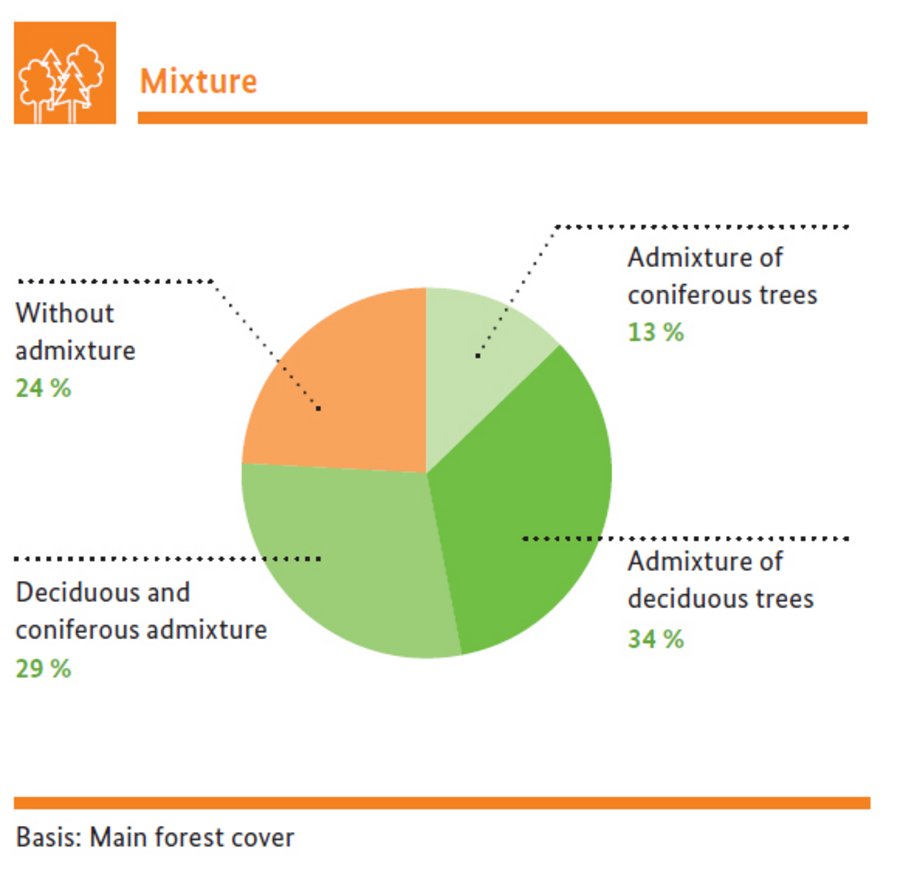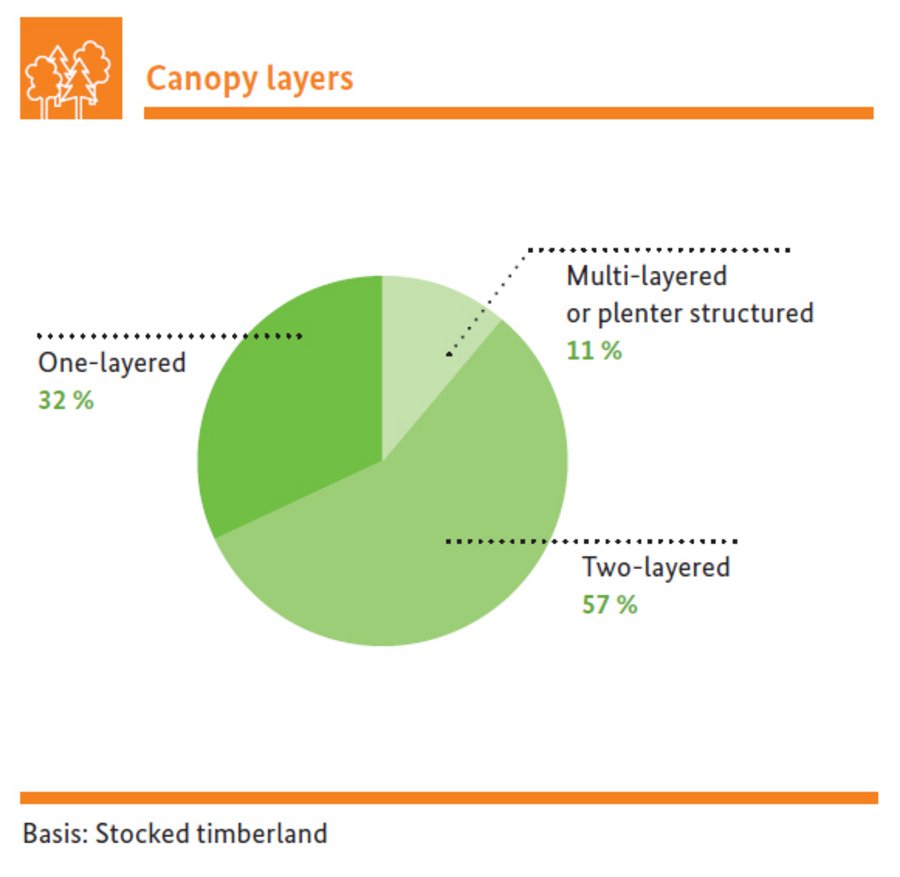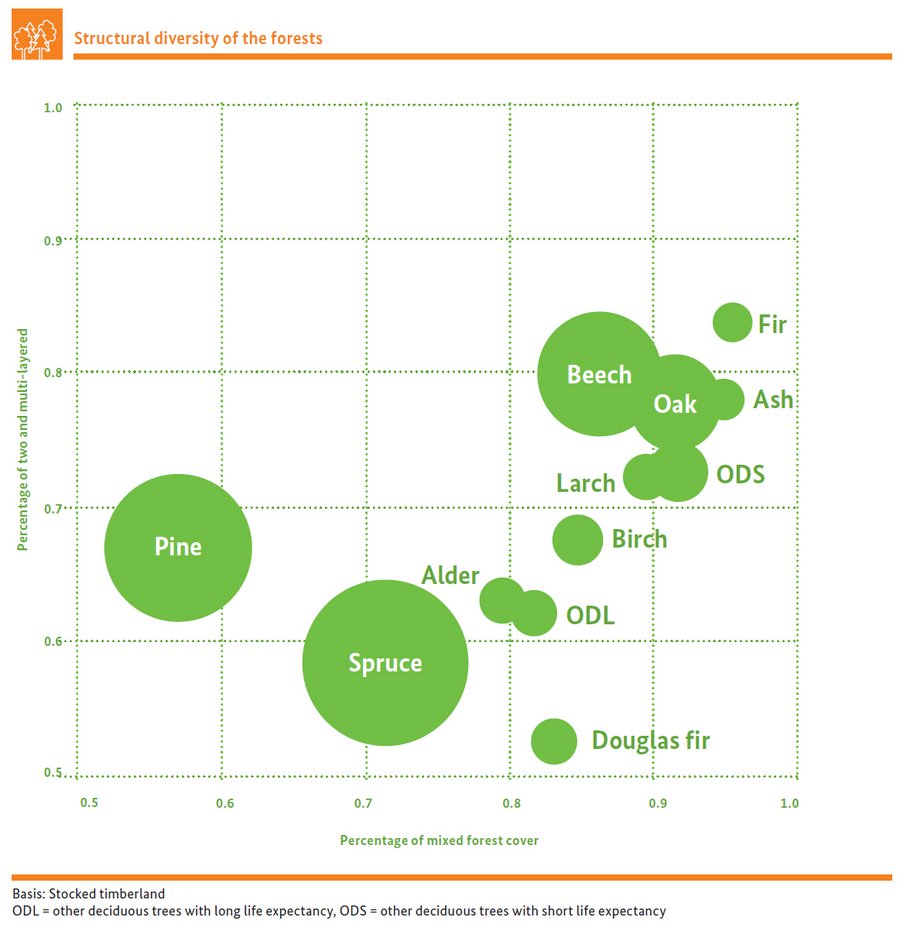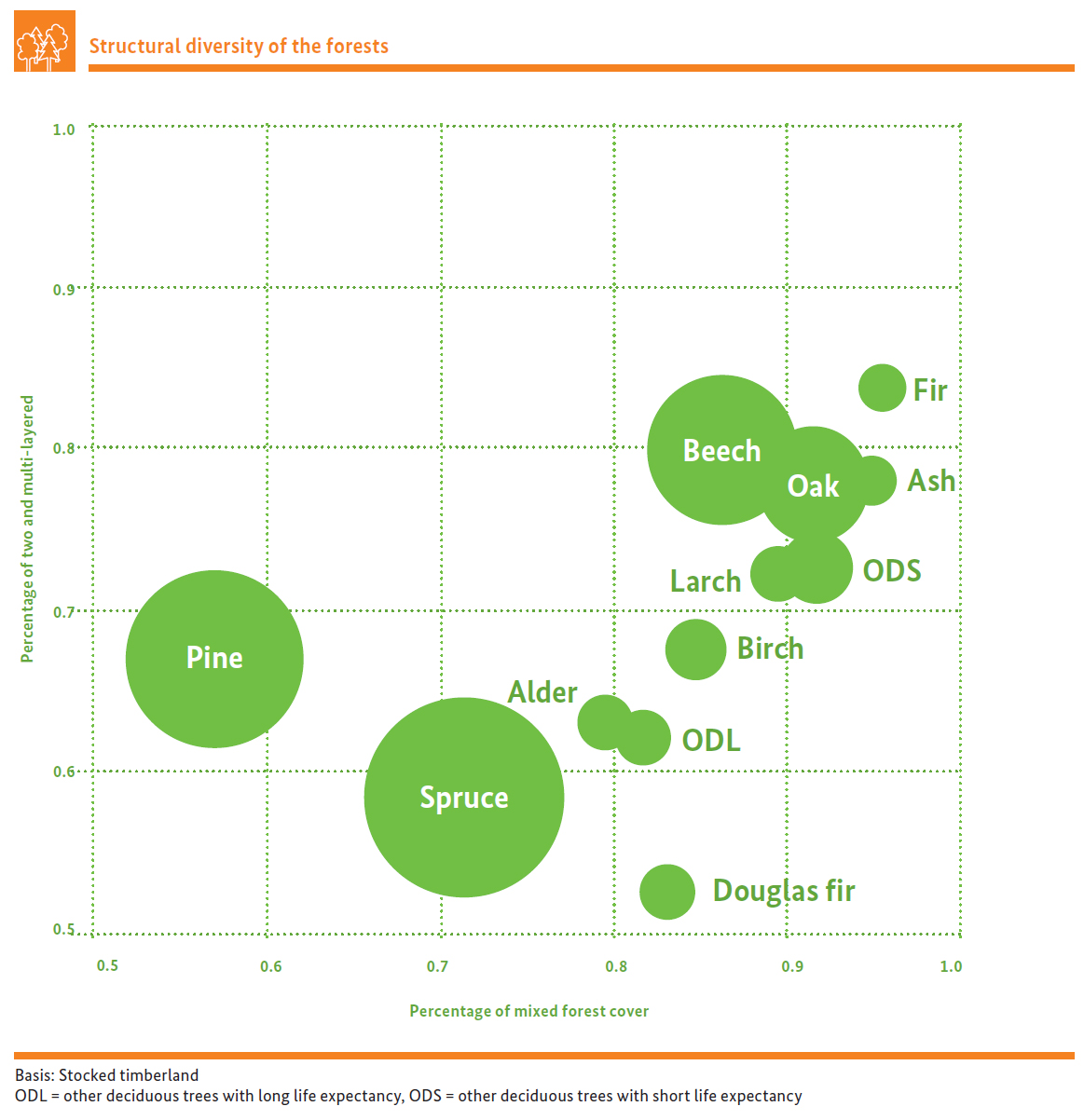A forest in which a variety of different tree species stand next to one another and the crown canopies of a multiple tree layers rise above one another offers diversified habitats for animals and plants. Due to its structural diversity, it can also better react to environmental impacts.
Tree species composition is also a key element of the forest’s horizontal structure. German forests are dominated by mixed forests, with 76 % of the area percentage. Pine forests, with an area percentage of 57% admixture or spruce forests with 71 % are relatively less mixed. All other forest cover types are more mixed.
Over the past ten years, the tree species composition has intensified somewhat. The area of mixed forest cover rose by 5 %.
With 85 % of the area percentage of young forest cover, natural regeneration is the dominant form of regeneration in the German forests. Plantings only make up 13 % and are primarily found among Douglas fir forest cover (73% of Douglas fir forest cover) and in oak forest cover (44 % of oak forest cover). The remaining area (seed, coppice shoots, unclassified) makes up a mere 2 %.
What is a mixed forest?





